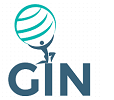Transplantation is an invasive technique in which a tissue or an organ is removed from the donor and transplanted into the recipient, or the transfer of tissue or organ from one location to another in the same person.
Tissue and organ transplantation and donation can save numerous lives. It can also restore normal function of patients to enhance their life quality. For instance, transplantation of the clear tissue that covers the eye is not essential but can restore and enhance vision.
Difference Between Organ Transplantation and Tissue Transplantation
The key difference between organ transplantation and tissue transplantation is that organ transplantation is when an organ such as a lung, heart, or kidney is detached from a person and transplanted into another.
Whereas, tissue transplantation is when tissues in the body such as corneas, skin, or bone are detached from a person and transplanted into another.
Types of Transplantation
Transplantation is a complex medical area as when tissues or organs are transplanted from one person to another, the receiver’s immune system can destroy or reject the donor tissue or organ, and medicine is required to subdue this response of the immune. The treatment approaches are different depending on the level of compatibility among the donor and the receiver, and the organ or tissue being transplanted.
Transplantation usually happens between donors and receivers, but the same person can also be both the donor and receiver. Let’s understand in detail:
Transplantation in the Same Person
Transplantation from one part of the body to another part of the same body is known as an autograft, and autotransplantation is the name of the procedure.
Here are some examples of autografts:
Skin graft: Utilized healthy skin to support the healing of burns or wounds on another body part.
Bone marrow graft: Bone marrow collected before chemotherapy of a patient suffering from cancer can replace their blood stem cells after chemotherapy of a high dose.
Blood vessel graft: This transplantation offers an alternate path for the flow of blood to bypass a blocked artery, for instance, in heart bypass surgery.
The benefit of autograft transplantation is that the person’s body is not likely to damage or reject their own cells, therefore, long-term medication to subdue the immune system response is not required.
Transplantation Between Two People
Transplantation among two people who are not identical genetically is known as allotransplant, and allotransplantation is the procedure. The tissues or organs can be from living or even dead people, where death occurs due to lack of circulation or significant injury to the brain.
In this transplantation, the receiver might require to take medication to subdue the immune response for the rest of their life to decrease the risk of rejection or damage to the donated organ.
With the surging prevalence of chronic illnesses, such as myelodysplastic disorders, kidney failure, solid tumors, plasma cell disorders, and immune system disorders; the growing consciousness regarding organ s or tissues transplantations; advancement in transplantation technologies; and the increasing success rates of transplantation, the transplantation industry will continue to advance, and it will reach a value of USD 30,117.5 million by the end of this decade.






















